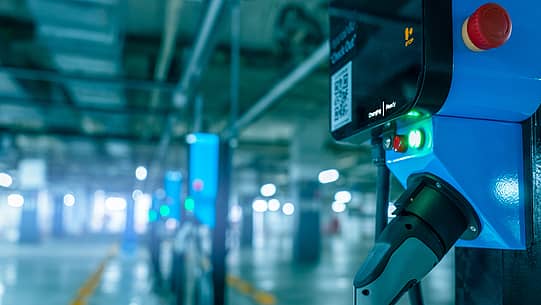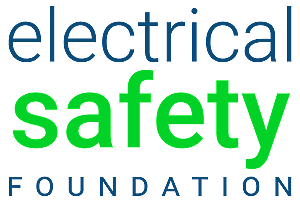
ESFI and Wesco’s article, Combating Roadblocks To Widespread EV Adoption, was recently published on Facility Executive’s website. Read the article here.
Combating Roadblocks To Widespread EV Adoption
When electric vehicle (EV) adoption becomes more common, existing electrical systems will be under greater pressure.
by Brett Brenner and Sean R. Nacey
E-mobility, or the electrification of mobility, has been a heavily discussed and debated topic in recent years. The energy transition from non-renewable sources to sustainable options has been proliferated in the media and is expected to change how society has operated since commercial cars became available during the 20th century.
The benefits of switching from a conventional vehicle to an electric vehicle (EV) include the reduction of carbon emissions, lower maintenance costs, and not having to contend with the volatility of gasoline prices. Today, the electrical grid is operating adequately because EV adoption remains in its early stages; but, when adoption becomes more commonplace, it may affect a businesses’ ability to supply power to charge its worker’s vehicles while still powering all elements of a building.
According to Experian, there are now 1.7 million electric cars operating in the U.S. Nearly every major automaker has an EV on the market, and because of this increase in production, EVs have become more accessible to the general public. Ultimately, this has started driving the cost of EVs down. According to an intelligence report from CarGurus in July 2023, the top 10 vehicles seeing the largest price declines year-over-year were electric vehicles.
While e-mobility vehicles may be an ideal way to lessen humankind’s impact on the environment, there are roadblocks to address and overcome before EVs can be adopted throughout the U.S., and more widely, the globe.
Adoption Challenges
An explosion of EV adoption could create a tremendous amount of stress on the grid. According to International Energy Outlook 2021, published by the U.S. Energy Information Administration (EIA), the world’s energy usage is predicted to increase nearly 50% by 2050. Further, there are other industries going through electrification at the same time, putting even further demand on the need for electricity.
There are now over 130,000 chargers across the U.S., with the government setting a goal of building a network of 500,000 EV chargers by 2030. The availability of chargers, or lack thereof, can lead to “range anxiety,” or the worry that an EV won’t have the power required to make it to the destination or nearest charging station. Even if a charger is nearby, the driver may not have the time required to fully charge their vehicle.
The real challenge here lies in the ability to develop the electrical infrastructure to support the chargers and the lead times associated with the components to build them. Based on the geography of a city or rural area, it isn’t always feasible to add new transformers, either due to space limitation or the remoteness of a location.
The supply chain for the raw materials and computer chips needed for EV batteries remains a challenge. Countries across the globe are also developing their EV programs, so the worldwide need for these materials is and will continue to be massive. The EV battery supply chain is currently at a bottleneck because of the lack of lithium and rare earth metals, which come primarily from Australia, Argentina, Chile, and China. With the explosion of the EV market in these countries, these resources have become scarcer. It’s also important to note that the U.S. does not currently have a mature battery production capacity or capability to reprocess and recycle used EV batteries. Further EV adoption will be influenced by how quickly battery production can be completed, the ability to recycle EV batteries, and the overall reliability of the electrical grid.
EV And EVSE Safety
According to the Department of Energy, EVs must meet the same Federal Motor Vehicle Safety Standards as conventional vehicles. EVs are also designed with additional safety features to shut down the electrical system when a short circuit or collision is detected. As with any electrical technology, the proper attention and care is crucial to ensuring safety when operating or charging the vehicle.
It is also important to note that facility executives should have a qualified professional conduct an electrical system inspection to ensure their facilities can support the charging demands of an EV. Contact a qualified electrician to conduct the inspection and install the necessary electric vehicle supply equipment (EVSE) or EV charging stations and chargers. Following proper safety protocols not only helps ensure safety for the person charging, but also for the vehicle connected to a charger.
Some of the biggest safety concerns regarding EVs involve charging safety and the proper installation of EVSE. If a charging cord or EV is damaged in any way, do not use the charger, and take the steps necessary to have an electrician repair the damage. Always visually inspect the charging cable before use. Only use manufacturer-provided or approved charging cables and those that have been certified by a Nationally Recognized Testing Laboratory.
Prior to charging an EV, always follow the manufacturer’s instructions on how to charge it safely and properly. Never use an extension cord or multi plug adapter when charging EVs, and never use an adapter to change charging types. Do not alter or modify an electric vehicle or its batteries. Always properly store chargers when not in use to prevent damage, and cover chargers to manufacturer’s specifications to avoid water damage. Ensure you have proper ground fault circuit interrupter protection installed to protect against electric shocks in garages and outdoors. Finally, be aware of your surroundings and do not encounter chargers when driving or parking.
Safety for EVSE installers is also imperative. The Electrical Safety Foundation (ESFI) recently surveyed EV installers to gauge their understanding of the safe installation of EVSE. The goal of the survey was to identify safety gaps related to emerging technology to keep installers safe. When asked about specialized EVSE training, 76% of installers said they had specific training, while 82% believed EVSE should have a specific certification.
Programs such as the Electric Vehicle Infrastructure Training Program (EVITP), which certifies electricians throughout the U.S. and Canada, are instrumental in properly training installers on the safe installation of EVSE. The qualified installation of EVSE will not only keep the installers safe, but provide a safe, long-term charging solution for consumers as well.
Lithium-Ion Battery Safety
Lithium-ion batteries power many portable consumer electronics, electric vehicles, and even store power in energy storage systems. In normal applications, these batteries are safe, but if damaged or overheated, they can cause fires. According to the International Association of Fire Fighters, the U.S. Consumer Product Safety Commission received reports of at least 208 fires or overheating incidents involving mobility devices in 39 states.
To avoid instances of lithium-ion battery fires, only use manufacturer-provided or authorized batteries and charging equipment. All equipment should be certified by a Nationally Recognized Testing Laboratory. Remove the battery or charging device from power once charging is complete to avoid overheating. Keep batteries and charge them at room temperature, as issues can occur below 32° F or above 105° F. Keep batteries and devices away from heat sources or anything that can catch fire. Do not store batteries in vehicles or direct sunlight. All maintenance on batteries or e-mobility devices should be completed by a qualified professional. Discontinue using devices or batteries that have an unusual odor, a change in color, produce too much heat, change their shape, are leaking, smoking, or not keeping a charge.
Making Widespread Adoption A Reality
In order for widespread adoption of EVs to become a reality, investments are needed. The path looks promising based on actions being taken by the public and private sectors as well as government agencies. The Inflation Reduction Act of 2022 seeks to lower energy costs, increase cleaner production, and reduce carbon emissions by roughly 40% by 2030. The act further expanded EV tax credits through 2032, and expanded tax credits for EV chargers with a 30% credit. For businesses going into low income and rural communities, they also increased that amount to as much as $100,000 on EV chargers and associated infrastructure to address the increase of access to EVs in underdeveloped areas.
By addressing the impact that the electrification of multiple industries will have on the grid, developing adequate charging infrastructure, and streamlining EV battery production, it will be possible to have widespread EV adoption and reduce emissions. Focusing on utilizing EVs and EVSE safely to ensure the longevity of the devices will also be paramount to adoption.

Brenner is the President of the Electrical Safety Foundation, a non-profit organization dedicated to promoting electrical safety at home and in the workplace. Over the past 16 years, Mr. Brenner has developed aggressive marketing and awareness campaigns to advance electrical safety. Such accesses have established the Electrical Safety Foundation as the primary source for unbiased electrical safety information to reduce electrically related deaths, injuries, and property losses.

Nacey is Senior Vice President and General Manager, U.S. Construction and Energy Solutions for Wesco. Prior to this role, he led the Integration Management Office (IMO) for the Wesco and Anixter merger.






